How to use NFTs for selling game access
February 6 2025
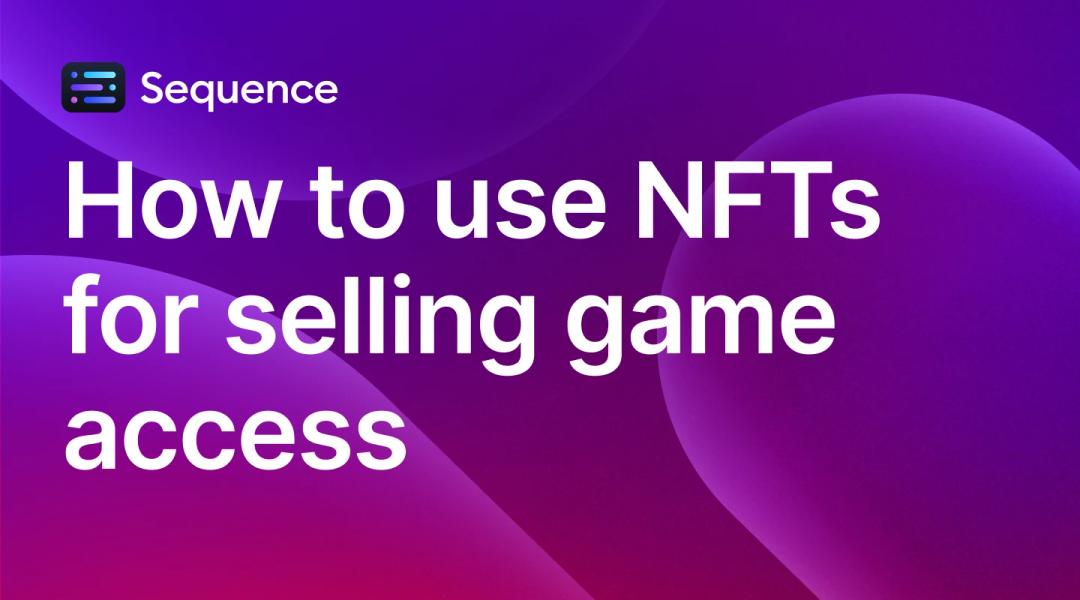
Game licensing has come a long way since the early days of physical cartridges and discs. As the gaming industry transitioned to digital platforms, new methods for distributing and controlling access to games emerged, led by platforms like Steam, Epic Games, and console stores.
However, these web2 platforms, while convenient, lack true ownership and control for the players. When users purchase a game digitally today, they don't own a transferable, resellable copy—they simply gain access for personal use.
With the rise of blockchain gaming and technology and NFTs (non-fungible tokens), a new model is emerging that allows developers to grant game access through NFT-based licenses. NFTs enable real ownership of digital assets, offering players more freedom and giving developers new ways to monetize their games.
In this post, we’ll explore how NFTs can serve as game access licenses, how they differ from traditional web2 approaches, and how developers can easily integrate them using the Sequence web3 game development platform.
Key takeaways
- Web2 platforms like Steam and Epic Games offer digital licenses but lack true ownership features, making them non-transferable.
- NFTs introduce true ownership, resale possibilities, and a decentralized approach to game licensing, benefiting both players and web3 developers.
The evolution of game licenses
The concept of owning a game has shifted significantly over the years. In the 1980s and 1990s, gaming was defined by physical media—cartridges for early consoles like the Nintendo Entertainment System (NES) and Sega Genesis, and later, CDs and DVDs for systems like the PlayStation and Xbox. When a player purchased one of these physical copies, they had a tangible item that gave them access to the game and could be resold, traded, or loaned to friends. The physical nature of these media meant that ownership of the game was simple and transferable.
As internet infrastructure improved and digital marketplaces emerged in the 2000s, the landscape of game distribution changed. Platforms like Steam (launched in 2003) and console marketplaces began offering digital downloads as a replacement for physical copies. Players could now purchase games directly from their consoles or PCs without needing to visit a store.
The convenience was undeniable—no more waiting for releases or worrying about scratched discs—but it came at a cost. When players bought digital games, they weren’t actually purchasing the game itself, but rather a license to access the game from a centralized server.
While this new digital model made gaming more accessible to a global audience, it created a paradigm shift in ownership. Unlike physical copies, these digital licenses were locked to specific accounts and platforms, meaning that players couldn’t transfer, resell, or gift the game once it was tied to their account. The rise of centralized platforms placed more control in the hands of corporations rather than consumers.
The result is that today’s gamers while enjoying unprecedented convenience, have far less control over their purchases compared to earlier generations. Digital rights management (DRM) software, account restrictions, and region locking have limited what users can do with the games they "own." This evolution from physical to digital has left many players wondering if there is a way to regain the ownership and control that used to be standard in the gaming world.
With the advent of blockchain technology and NFTs, that question is now being answered. NFTs offer a way for gamers to own their digital games in a manner that resembles the ownership of physical copies. As NFTs gain traction in gaming, they introduce new opportunities for developers to rethink how game licenses are distributed and controlled.
How game licensing works in web2
In today’s gaming ecosystem, most games are distributed digitally through centralized platforms: besides Steam, also Epic Games store, PlayStation Store, and Xbox Live. These platforms have become the dominant way players access games, thanks to their convenience and vast libraries of titles. However, the way digital game licenses function in these web2 systems differs fundamentally from the traditional model of ownership that gamers experience with physical media.
When players purchase a game on platforms like Steam, they are not buying the game itself but rather a license to access the game through their account. This license is non-transferable, meaning it’s tied directly to the user's account and cannot be resold or traded. For instance, if a player decides they no longer want a game, there’s no mechanism in web2 platforms to sell or transfer that game to someone else. Once a game is bought, it’s locked into the player’s library for good.
Examples of limitations in web2 licensing
Steam and Epic Games Store: Both platforms offer robust digital storefronts where players can purchase games that are then added to their digital libraries. However, these libraries are tightly controlled by the platform. Steam’s End User License Agreement (EULA), for instance, explicitly states that users are granted a "limited, non-transferable license" to use the accounts and games. This means that the platform retains control over how games are distributed and managed, leaving users with no recourse if they want to trade or resell the game.
Console ecosystems: Similarly, console platforms like the PlayStation Store and Xbox Live operate under the same principles. Digital games are tied to specific accounts, and even when a player downloads a game, they don’t truly own it in the traditional sense. Console DRM systems also prevent users from transferring access to other accounts or devices that aren't associated with their own.
No secondary market: In web2, there is no legitimate secondary market for digital game licenses. Players can’t sell or trade games they no longer want, unlike physical games that can be sold to friends or traded in at stores. This not only limits players' options but also reduces the overall value of their digital collections. Once a game is purchased, it effectively becomes a sunk cost.
Using NFTs as game access licenses
NFTs have garnered attention as a revolutionary way to manage digital ownership, and their potential in gaming is particularly exciting. When it comes to game access, NFTs can function as digital keys or licenses that grant players access to games. However, unlike traditional digital licenses, NFTs provide true ownership and offer several advantages that web2 models can’t match.
What is an NFT in the context of game access?
An NFT is a unique, verifiable digital asset stored on a blockchain, and it can represent anything from artwork to virtual items and even access rights. In the context of game access, NFTs can act as a key or license that a player holds in their web3 wallet, which grants them the ability to play a specific game. As long as the player owns the NFT, they retain access to the game. If they choose to sell or trade the NFT, the new owner gains the right to play.
Unlike traditional game licenses that are tied to an account on a centralized platform, NFTs are decentralized and transferable. This means that players can buy, sell, or trade their NFT licenses on open markets, creating a new level of flexibility and ownership that has been missing from digital gaming.
Benefits of NFTs as game licenses for players
One of the most significant advantages of NFTs as game licenses is that players regain control over their purchases. When a player buys an NFT game license, they own it outright, similar to how they would own a physical copy of a game. This ownership comes with several benefits:
- Resale and trade: Players can sell or trade their NFT licenses on secondary marketplaces. If a player no longer wants to play a game, they can resell the NFT and recoup some of their investment. This is in stark contrast to web2 licenses, which are non-transferable.
Example: A limited-edition game release with only 1,000 NFT licenses can become a valuable collectible. Players who own these licenses can later sell them to other players, potentially for a higher price if the game becomes popular.
- Ownership and permanence: Because NFTs are stored on the blockchain, players retain ownership of their game access tokens regardless of what happens to the platform or the game developer. In web2, if a platform like Steam or Epic Games shuts down, or if a game is delisted or access is revoked, players can lose access to their games entirely. With NFTs, the ownership is decentralized, meaning that the access token itself remains in the player's control, even if the game's servers go offline or the developer shuts down.
However, it's important to note that while the NFT provides ownership of the game access token, it does not guarantee that the game will always be playable—especially if the game infrastructure itself is centralized. In such cases, players might lose the ability to play the game, but they will still own the NFT, which could serve as a collectible or a digital relic of the game.
Benefits of NFTs as game licenses for developers
For developers, using NFTs to manage game access licenses opens up a range of new possibilities that web2 models can’t offer:
- Control over distribution and scarcity: Developers can issue a limited number of NFT licenses for a game, creating scarcity and increasing the perceived value of the game. By controlling the number of NFTs minted, developers can also manage exclusive releases or limited editions, which can drive demand and offer a sense of exclusivity to players.
- Customizable transfer restrictions: One of the powerful features of NFTs is the ability to include customizable rules within the smart contract. Developers can program conditions that restrict how and when NFTs can be transferred. For example, a developer might want to prevent an NFT from being sold or transferred immediately after it is minted, to discourage scalping or ensure early access to loyal players. They could program a time-based lock, such as preventing transfers for the first three months after the NFT’s creation.
Example: A developer launches a game with exclusive early access NFTs. To prevent buyers from immediately flipping these NFTs on secondary markets, they set a three-month transfer restriction. This ensures that the initial holders are players who are genuinely interested in the game, not just looking for quick profits. - Royalties on secondary sales: One of the key features of NFTs is the ability to program royalties into the smart contract. This means that every time a player resells a game access NFT, the developer can receive a percentage of the transaction. This creates a continuous revenue stream for developers, even after the initial sale.
Example: A developer might release a limited-run game with 5,000 NFT licenses. When players sell these NFTs on a secondary market, the smart contract ensures the developer receives a 10% royalty on each sale. - Direct engagement with players: NFTs allow developers to bypass traditional game distribution platforms and connect directly with players. By selling NFTs through their own websites or decentralized marketplaces, developers can reduce their reliance on intermediaries like Steam or Epic Games, which typically take a significant cut of sales.
- Programmable utility: NFTs can go beyond simply granting access to a game.
Developers can add additional functionality to the NFT, such as in-game perks, exclusive content, or the ability to participate in future game development decisions. This creates a more immersive experience for players and deepens their connection to the game.
Leverage NFTs into your game with Sequence web3 gaming stack
If you’re a developer looking to harness the power of NFTs for game access, Sequence web3 stack makes the process simple and seamless. With Sequence, you can easily create, sell, and validate NFT-based game licenses directly from your website or within your web3 game. Our platform allows you to manage everything from minting the NFTs to integrating them into your existing game infrastructure, without the need for deep blockchain expertise.

Sequence Collections is a powerful new module added to Sequence Builder that lets you easily create and manage NFT collections for ERC721 and ERC1155 collections. Read all the details and how to get started!
Whether you want to offer limited-edition game licenses, implement royalties on secondary sales, or give players true ownership of their game access, Sequence provides the tools you need. By leveraging Sequence web3 development platform, you can focus on building great games while we handle the complexities of blockchain technology.
Start today at www.sequence.xyz
Sequence makes building onchain simple. Developers and teams can launch, grow, and monetize apps with unified wallets, 1-click cross-chain transactions, and real-time data, all in a modular and secure stack. No more stitching together fragmented tools or battling poor user flows. Sequence is production-ready infrastructure that helps teams ship faster, onboard more users, and scale confidently. From chains and stablecoins to DeFi and gaming, Sequence powers developers and applications across the EVM ecosystem with billions in transaction volume and millions of users. Trusted by leaders in blockchain, Sequence powers today’s onchain apps and delivers future-proof infrastructure for tomorrow’s breakthroughs. Learn more at sequence.xyz.
Written by

Sequence team
Sequence logoRelated Posts
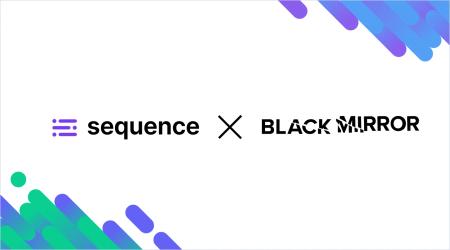
In partnership with KOR Protocol, Sequence and Msquared, Black Mirror's franchise has launched the $MIRROR token and a new web3 experience!
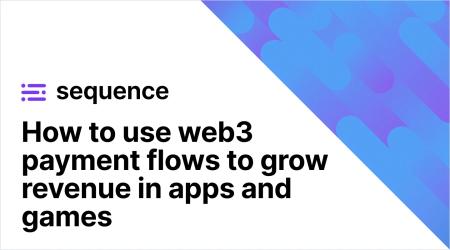
Web3 payment flows allow any app to embed onchain purchases and interactions in a way that feels natural for users. Learn more about them!
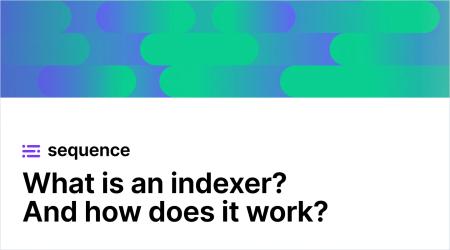
As more applications and protocols move onchain, indexers redefine how dev teams access, organize, and use blockchain data. Learn how!
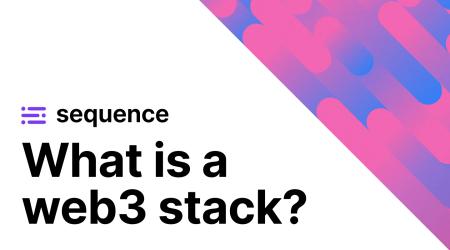
What exactly is a web3 stack, and how does it differ from traditional architecture? Let's break down this concept and explain its components!





